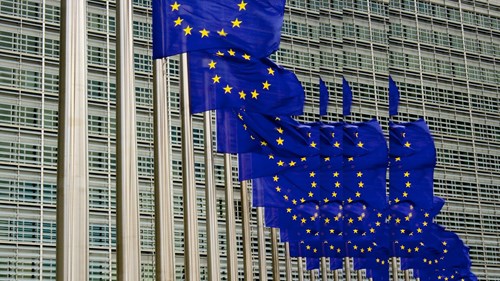Carbon Border Adjustment Mechanism: Implementing Regulation Provides Necessary Guidance For The Transitional Period Starting 1 October 2023
On 15 September 2023, the Commission Implementing Regulation (EU) 2023/1773 (“Implementing Regulation”) was published in the Official Journal of the EU. The Implementing Regulation governs the application of Regulation (EU) 2023/956 establishing a carbon border adjustment mechanism (“CBAM” or “CBAM-Regulation”) during the transitional period from 1 October 2023 until 31 December 2025.
During this transitional period, obligations under the CBAM-Regulation are limited to quarterly reporting duties regarding embedded emissions of relevant goods listed in the Annexes. Obligations to surrender emission certificates will apply from 1 January 2026. The newly adopted Implementing Regulation specifies these quarterly reporting obligations and provides more detailed guidance on how to calculate the embedded emissions.
Background
The CBAM-Regulation was adopted on 10 May 2023 (see our related News Alert here). Under the mechanism, CBAM certificates have to be surrendered upon importation of certain goods depending on their greenhouse gas (“GHG”) intensity. Corresponding certificate prices are based on the EU Emissions Trading System (“EU ETS”), which has been revised in order to ensure compatibility with the CBAM (see our related News Alert here).
Ultimately, the CBAM aims to prevent so-called carbon leakage, i.e. the relocation of production capacities in carbon-intensive industries from the EU with a view to avoiding the EU ETS. Furthermore, the international outreach of European environmental policies is reinforced: GHG emitted abroad over the course of the production of goods imported into the EU are integrated into an overarching European market-based carbon compensation scheme.
Reporting Duties
The first reports under CBAM’s transitional regime must be submitted by 31 January 2024. They must cover the imports of relevant goods made within the previous quarter. Goods placed under inward processing must be included if they have been released for free circulation in the previous quarter.
With a view to facilitating these reporting duties, the Implementing Regulation sets up a so-called CBAM Transitional Registry. This is an electronic database for communication, checks and information exchange between the European Commission (hereafter “the Commission”), the competent national authorities, customs authorities and reporting declarants. Through this system, CBAM reports (by the importers in their own name and on their own behalf or by an indirect customs representative) can be submitted.
Under the Implementing Regulation, once CBAM reports have been submitted, they may be modified within two months after the end of the relevant reporting period. An exception applies to reports submitted for the first two reporting periods: these may be modified up until the submission deadline for the third CBAM report, i.e. until 30 October 2024. Furthermore, CBAM reports can be modified up until one year after each relevant reporting period upon a “justified request” by a CBAM declarant.
Failure to comply with these reporting requirements will result in penalties between EUR 10 and EUR 50 per tonne of unreported emissions. Penalties increase further in case of persistent or repeat offences.
Content of CBAM reports
The Implementing Regulation provides further details on the contents of CBAM reports, including the quantity and type of goods imported as identified by their code under the EU’s Combined Nomenclature (“CN”).
In a second step, embedded emissions of these goods must be declared. These consist of direct and indirect emissions during the production process. Direct emissions encompass emissions from the production process of the goods, including the production of relevant precursors, which are defined in the Annexes to the Implementing Regulation. Indirect emissions cover the emissions from the production of electricity consumed during the production process.
The Implementing Regulation likewise lays down the methodology to determine embedded emissions. Depending on the type of good, the system boundaries of production processes are specified (i.e. the specific chemical or physical process carried out to produce goods within a so-called aggregated goods category). Likewise, the precursors relevant for the embedded emissions of a given good are determined based on the production process employed.
Calculation Methods
The Implementing Regulation moreover provides for the permissible calculation methods in order to determine embedded emissions.
For the purposes of calculating the direct emissions for goods other than electricity, four methods are available:
- Firstly and primarily, calculations should be based on a monitoring system set up for the purposes of CBAM compliance. This system can be based on two methodologies: a calculation-based approach based on the amount and GHG intensity of the fuel type utilised or a measurement-based approach measuring the actual emissions caused at the production site;
- Secondly, until 31 December 2024, the embedded emissions reported may be based on a pre-existing emission monitoring scheme within a given third country;
- Thirdly, until 31 July 2024, the reporting may be based on other methods if certain input values are missing. This includes employing default values to be published by the Commission or determined in accordance with the methods provided in the Annexes to the Implementing Regulation.
Moreover, estimated values may be used in order to determine up to 20% of embedded emissions of complex goods (i.e. goods comprised of precursors and fuels also entailing embedded emissions).
When determining the direct emissions for electricity, the embedded emissions are calculated either based on country specific default values to be provided by the Commission or an unspecific default values. Actual embedded emissions may only be used if the imported electricity stems from a power purchase agreement with a specific supplier of electricity.
For the purposes of determining indirect emissions, three different situations have been identified in the Implementing Regulation:
- If electricity is sourced from a country’s public electricity grid, a default emission factor provided by the Commission based on data of the International Energy Agency or any other emissions factor based on publicly available data is to be used;
- If electricity is produced within the production installation itself, indirect emissions are to be monitored as direct emissions would be;
- If the electricity is supplied through bilateral Power Purchase Agreements with specific electricity suppliers, the supplier ought to monitor its emissions under the rules applying to electricity production within the production installation itself.
Implementation of the CBAM
The Commission has developed dedicated IT tools and materials to support importers and more generally businesses in their compliance efforts. A guidance document on CBAM implementation for importers of goods into the EU and a separate guidance document for third country operators of installations producing CBAM goods have already being published. These documents are accompanied by an electronic template for information on installations.
The coming months will be crucial for the future of the mechanism. In fact, during its transitional phase, the Commission will conduct a review of the functioning of the CBAM and of the product scope of the CBAM-Regulation.
Another element might affect the proper implementation of the CBAM in the medium-term. On 8 August 2023, the Polish Government filed a request with the General Court of Justice of the EU to annul the CBAM-Regulation under Art. 263 of the Treaty of the Functioning of the EU (“TFEU”)[1]. Poland argues that the CBAM mainly relates to fiscal policy and that any measures primarily of a fiscal nature would have to be adopted by the Council unanimously, instead of by qualified majority.[2] The CBAM-Regulation was adopted on 25 April 2023, with Poland voting against the Regulation and Belgium and Bulgaria abstaining. Already at that time, the Polish Ministry of Climate and Environment stated that the introduction of CBAM would lead to an increase in the cost of imported products and electricity. However, the action will not have immediate consequences, as it does not lead to the suspension of the CBAM-Regulation; only the Court of Justice of the EU may annul the act in its entirety or certain provisions (Art. 264 TFEU), with Art. 263 TFEU proceedings typically lasting two years minimum.
Additionally, the EU institutions hope the CBAM will become the standard in climate policies, with third countries introducing their own mechanisms and emissions trading systems on the basis of the European framework. Thereby, understanding the CBAM and its implications is crucial for importers and non-EU producers, and businesses should continue their efforts to prepare for the CBAM compliance obligations.
[1]: Case C-512/23 Poland v Parliament and Council for annulment of Regulation (EU) 2023/956 establishing a carbon border adjustment mechanism, to be found here: curia.europa.eu
[2]: Announcement by the Polish Government, 09 August 2023 to be found here: https://www.gov.pl/web/klimat/polska-zaskarzyla-do-tsue-kolejne-dwa-akty-prawne-bedace-czescia-pakietu-fit-for-55
Well
informed
Subscribe to our newsletter now to stay up to date on the latest developments.
Subscribe now








